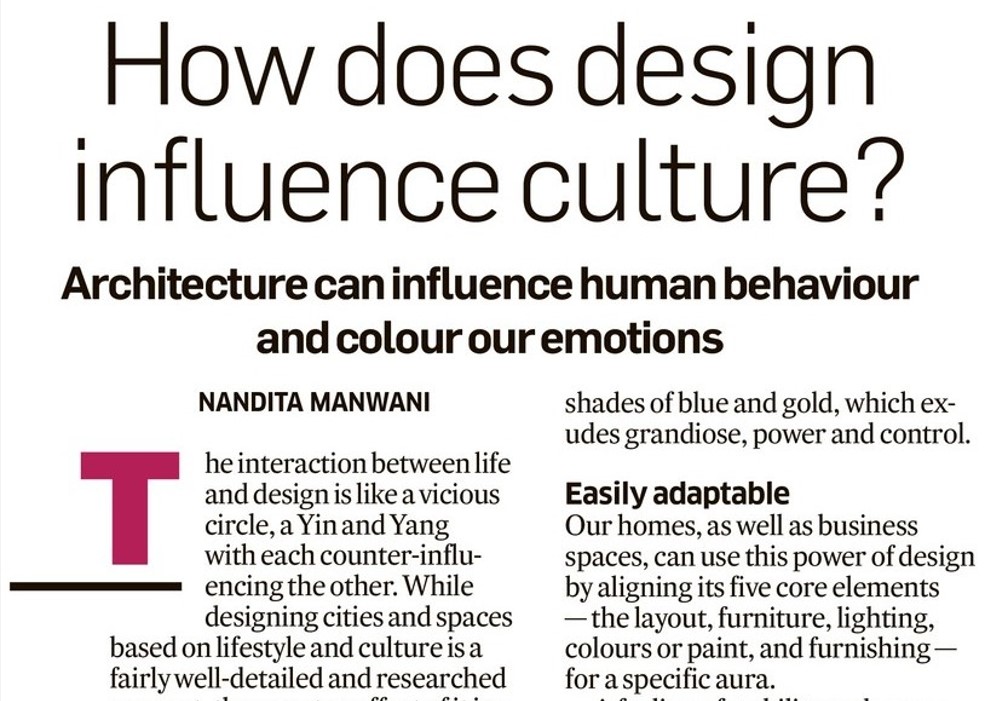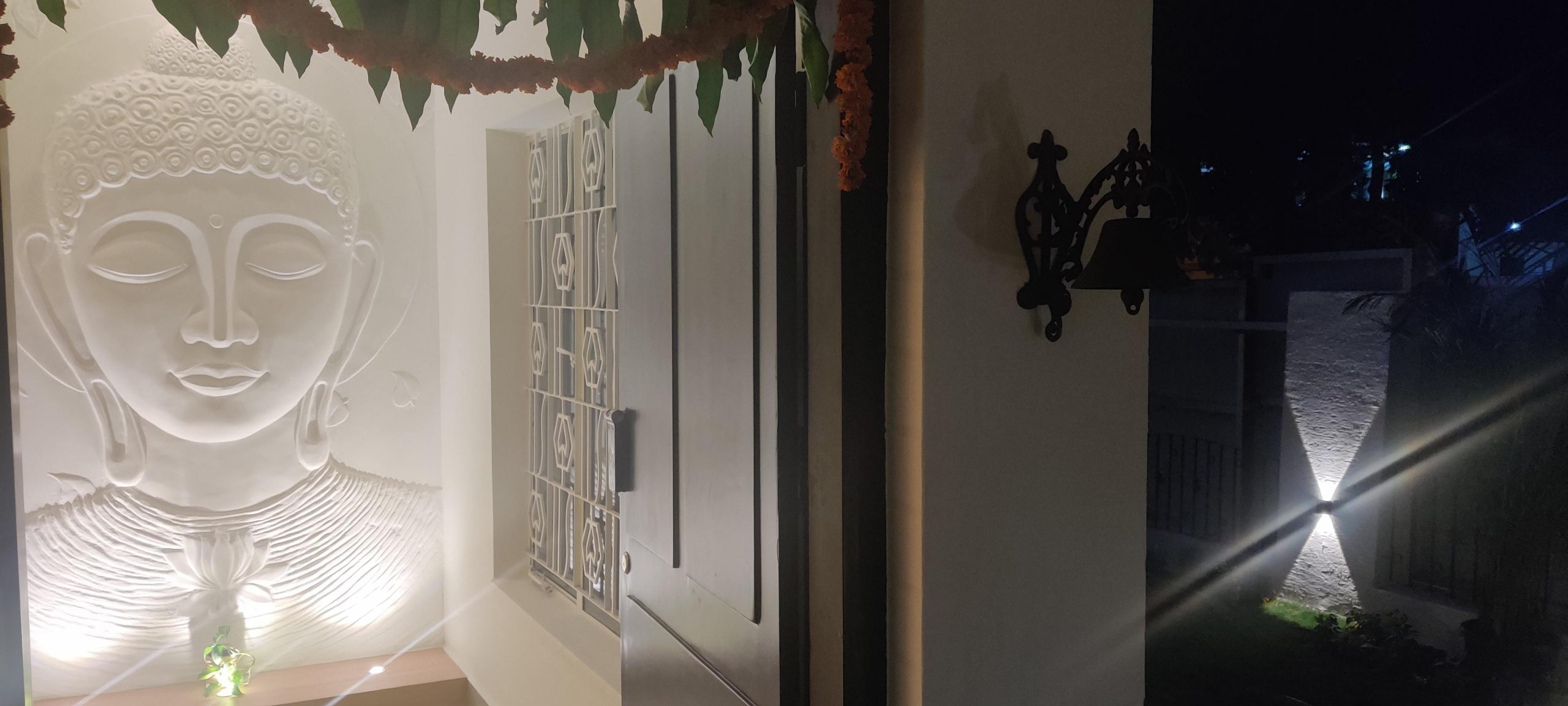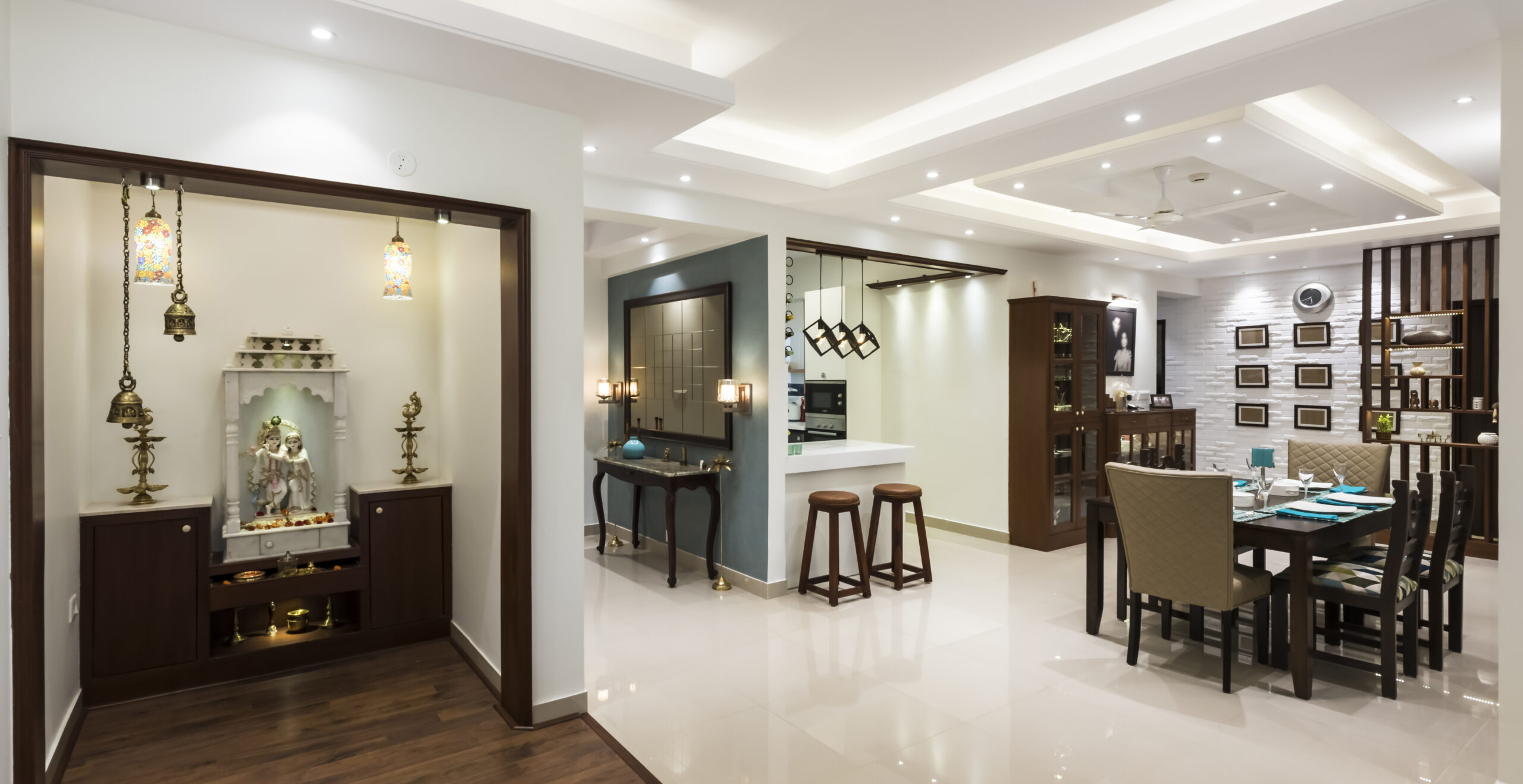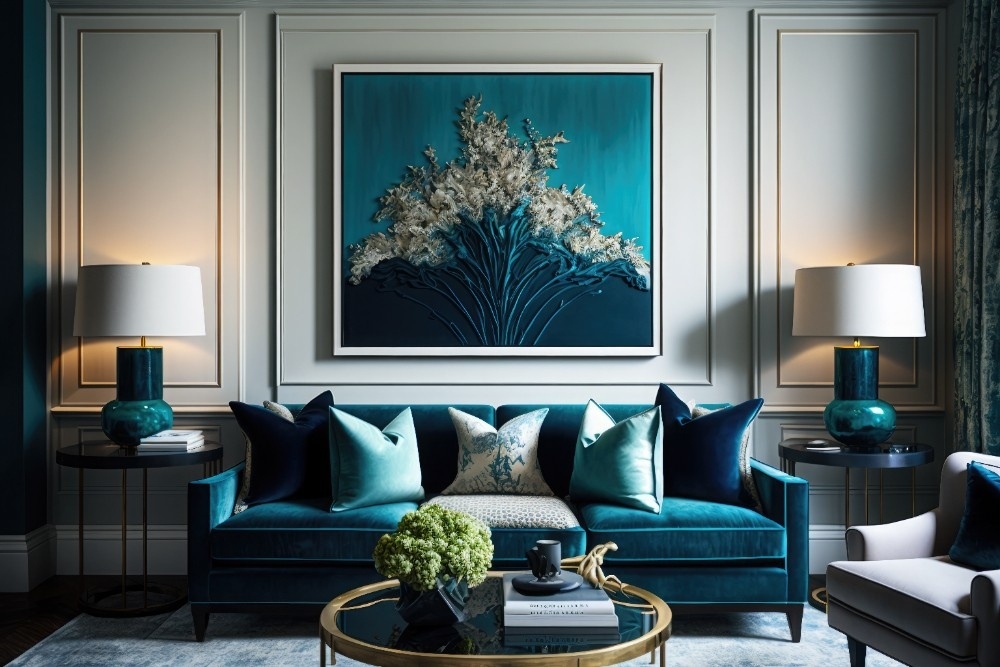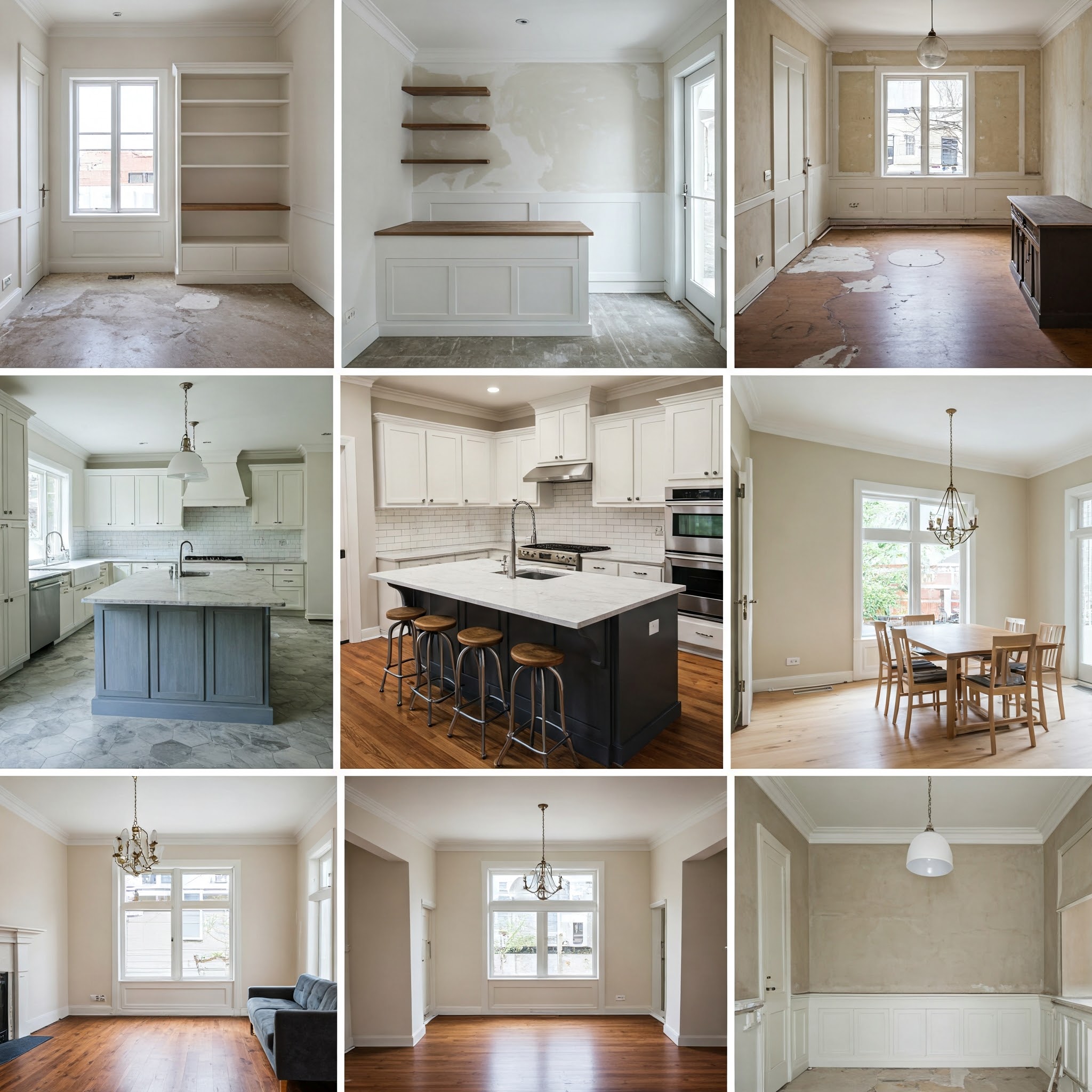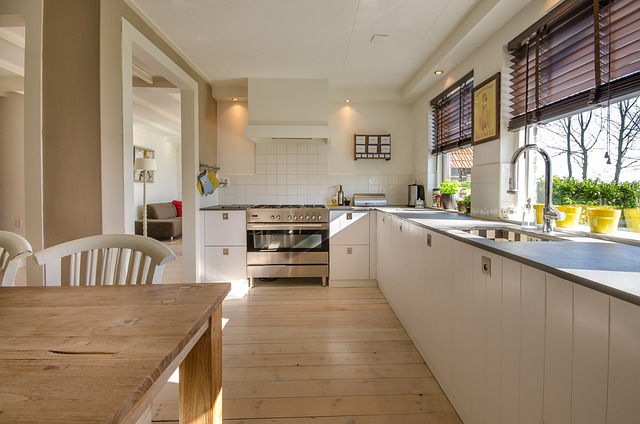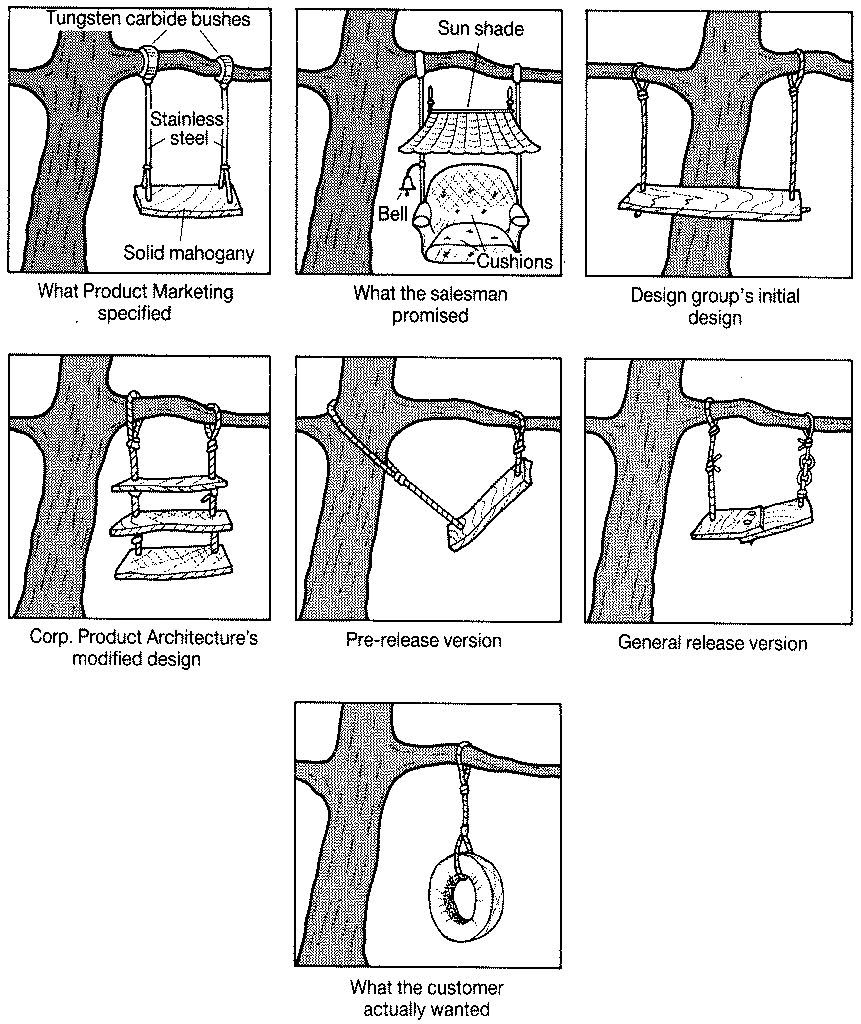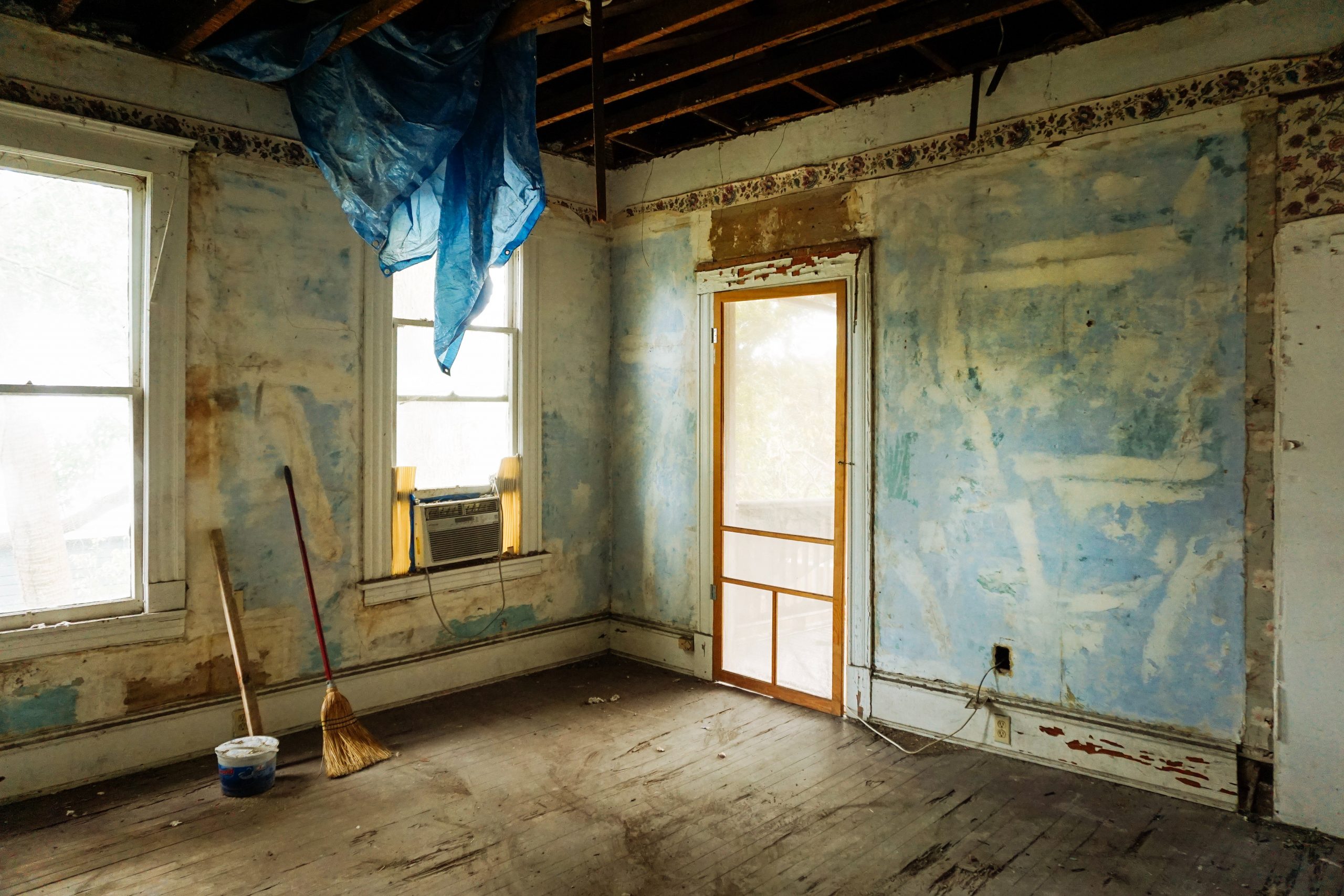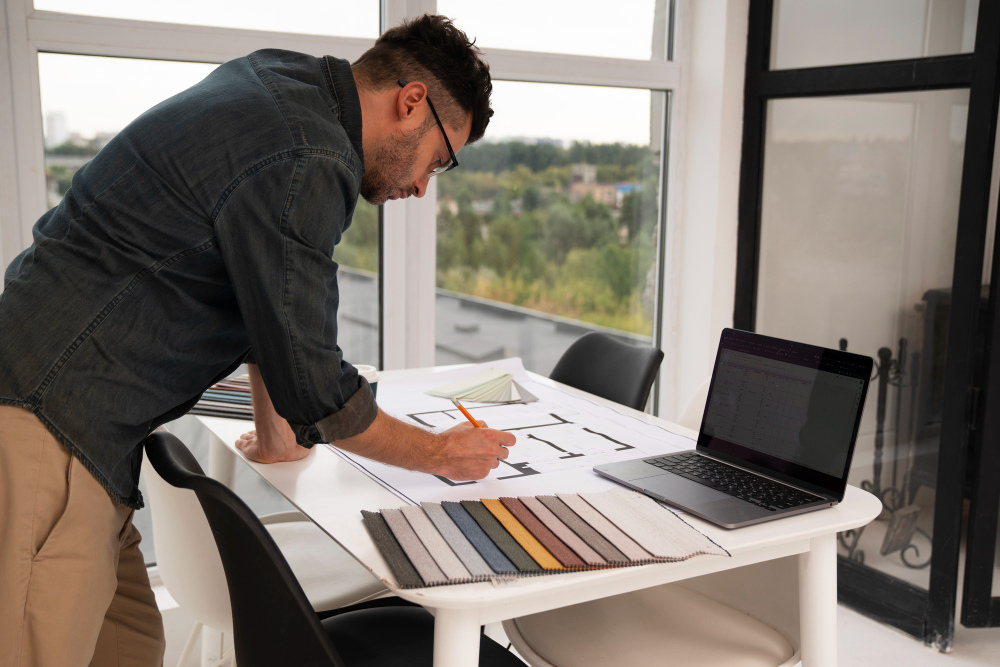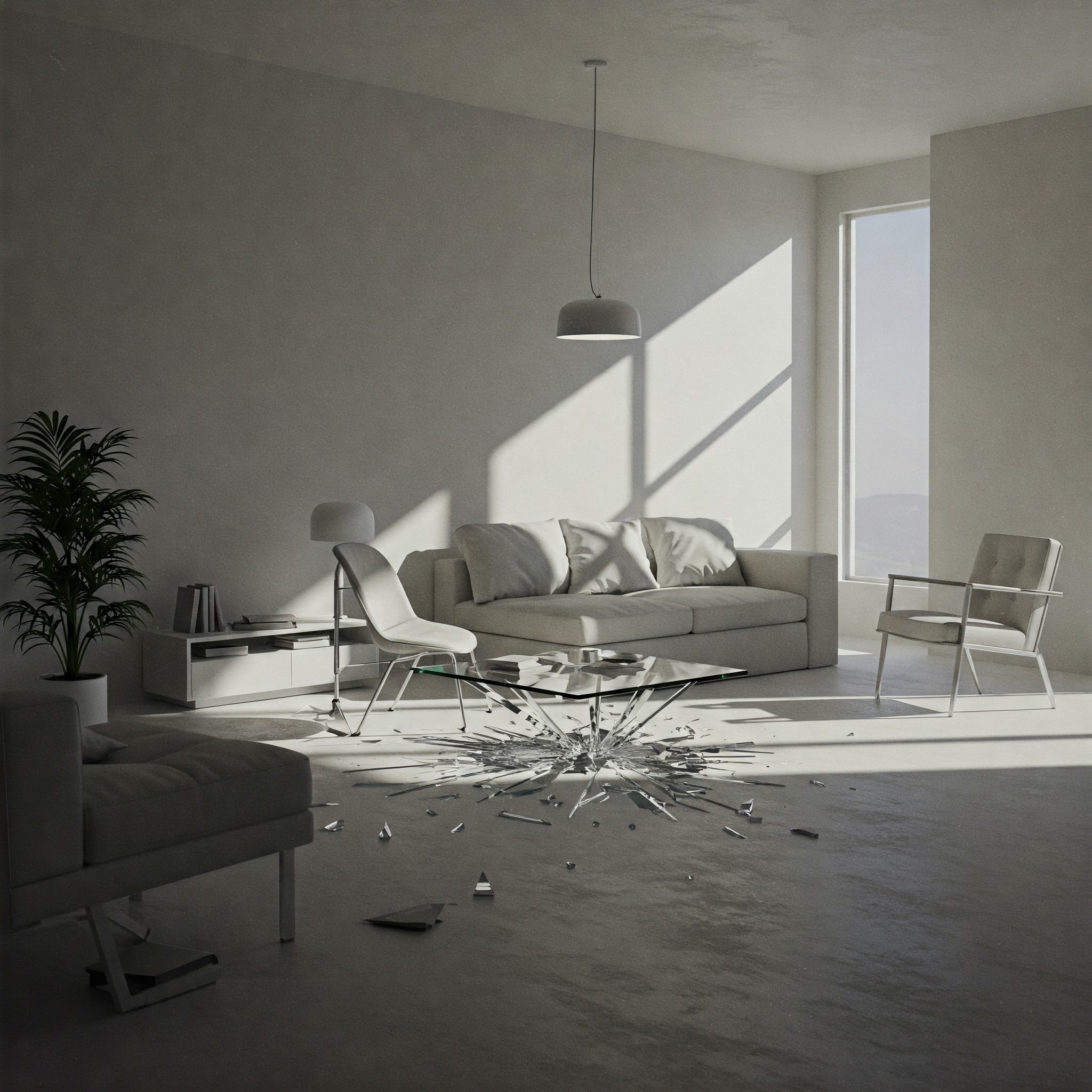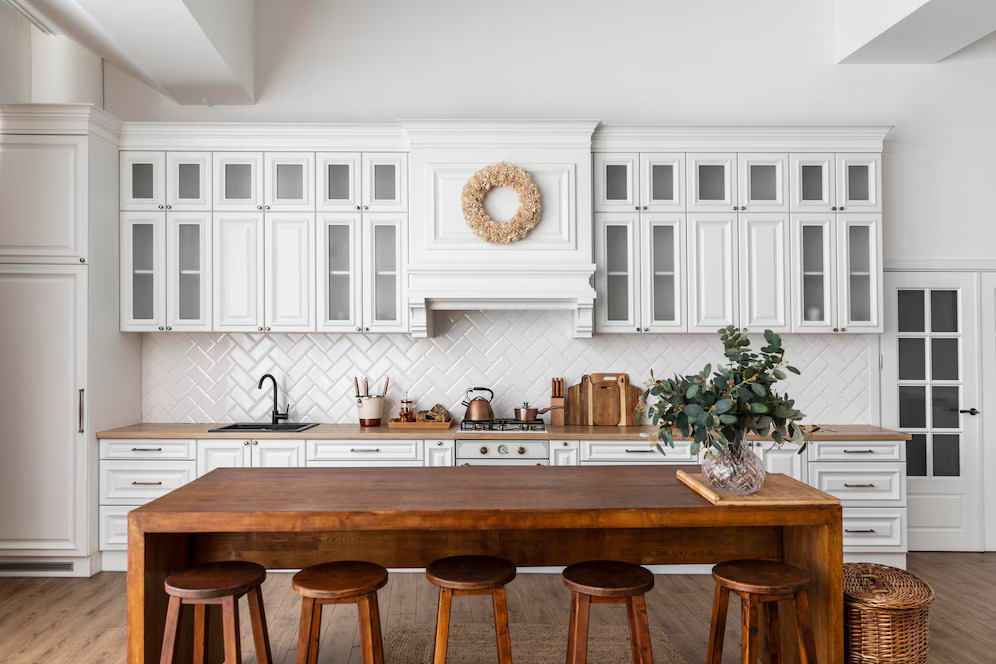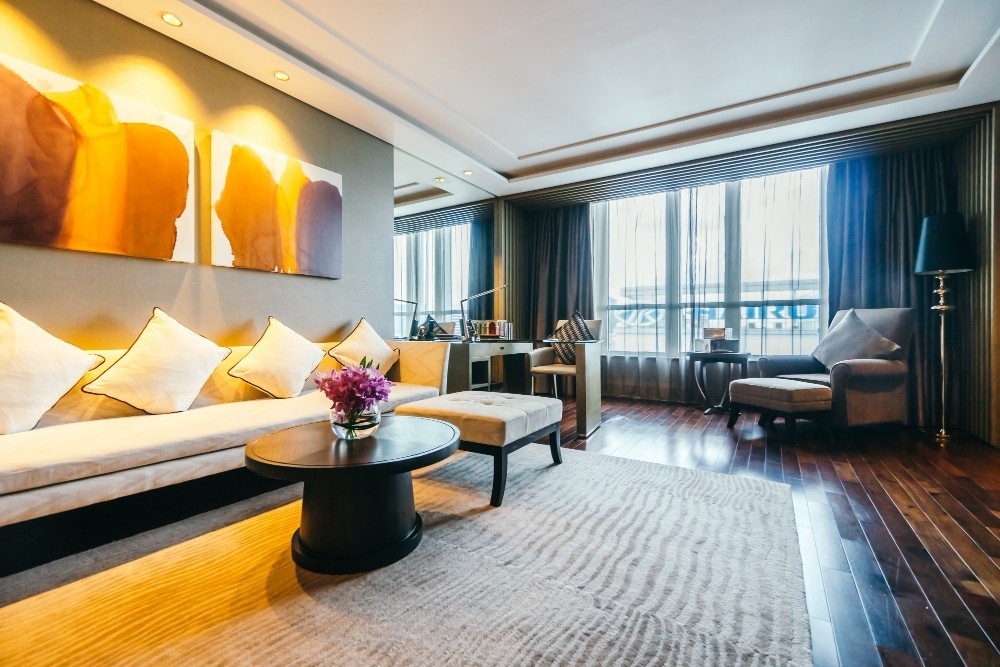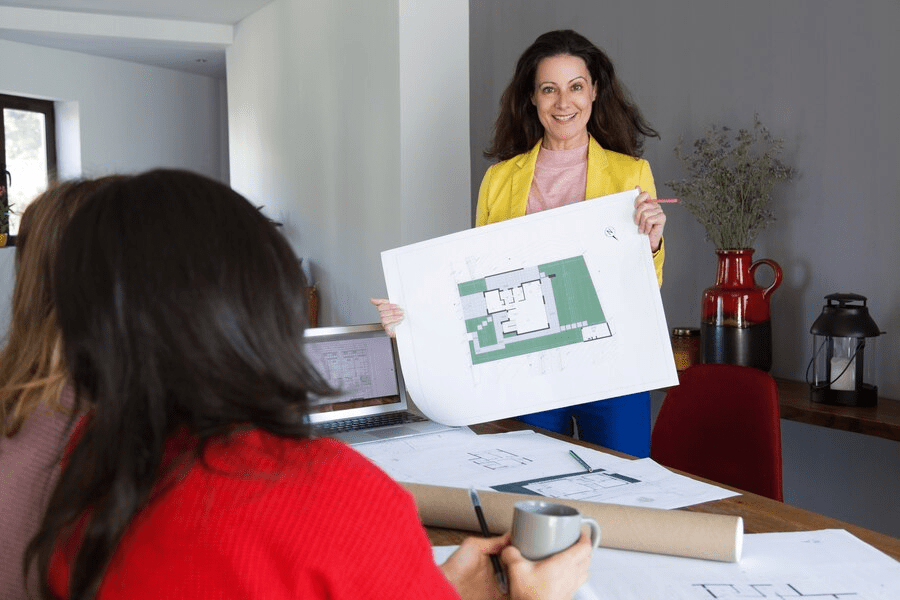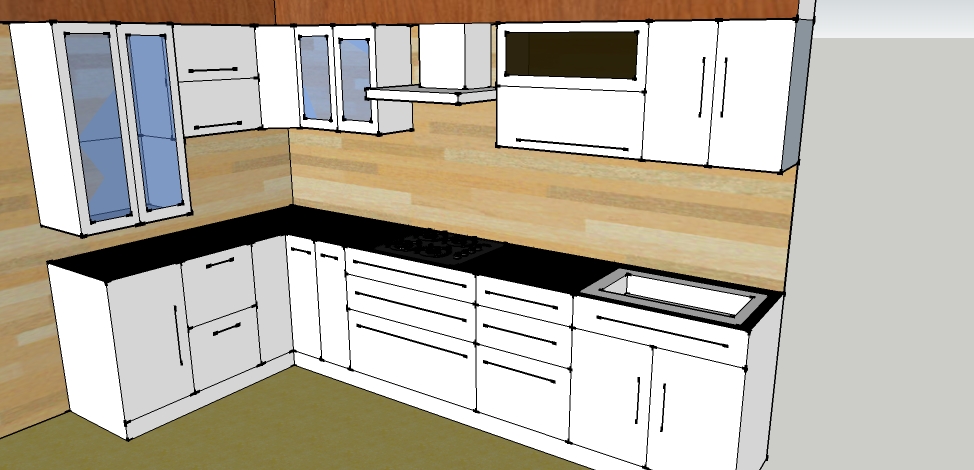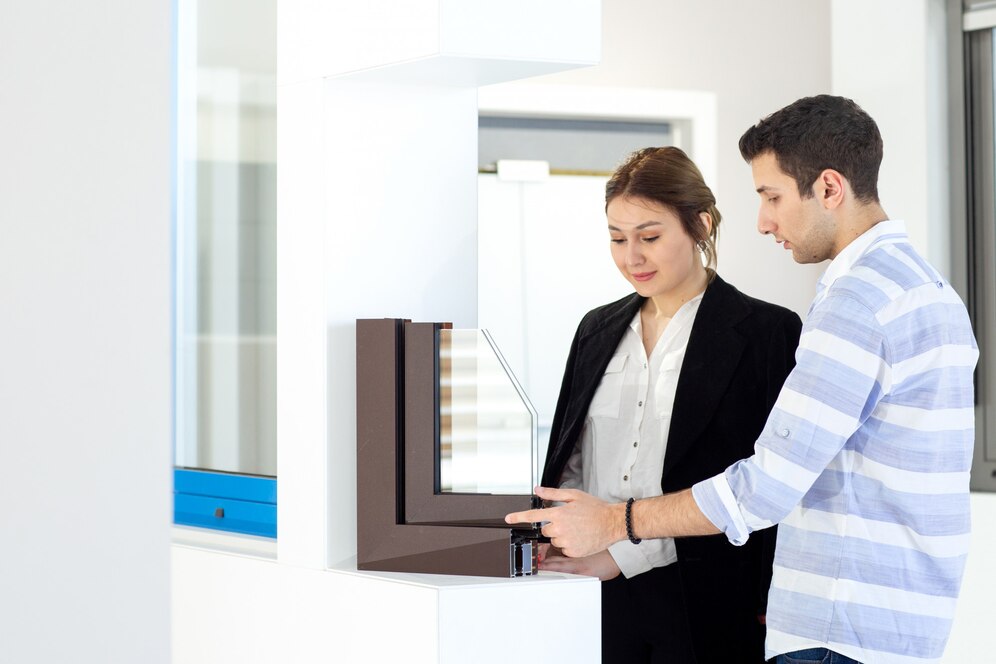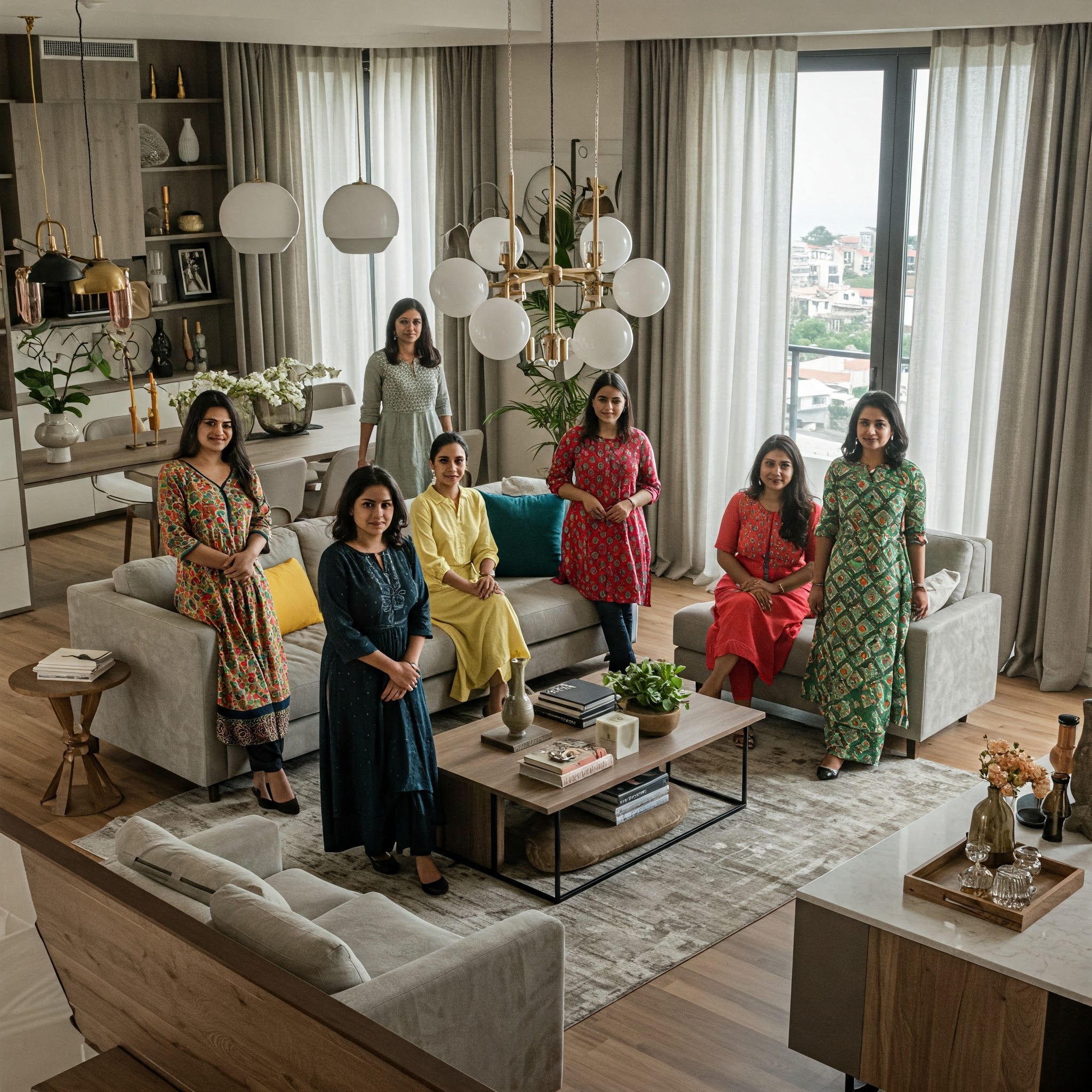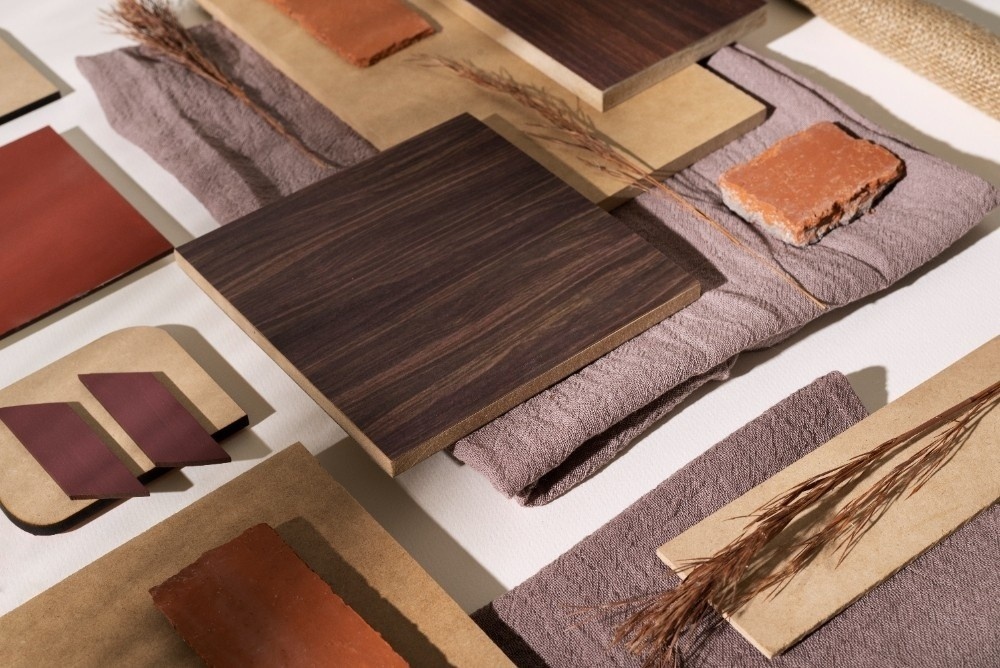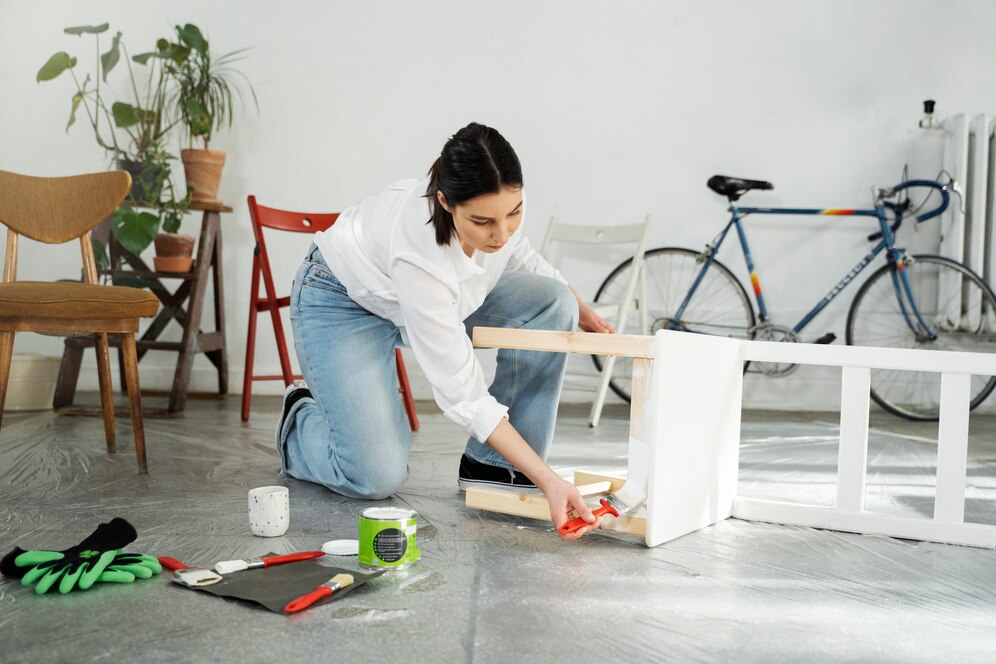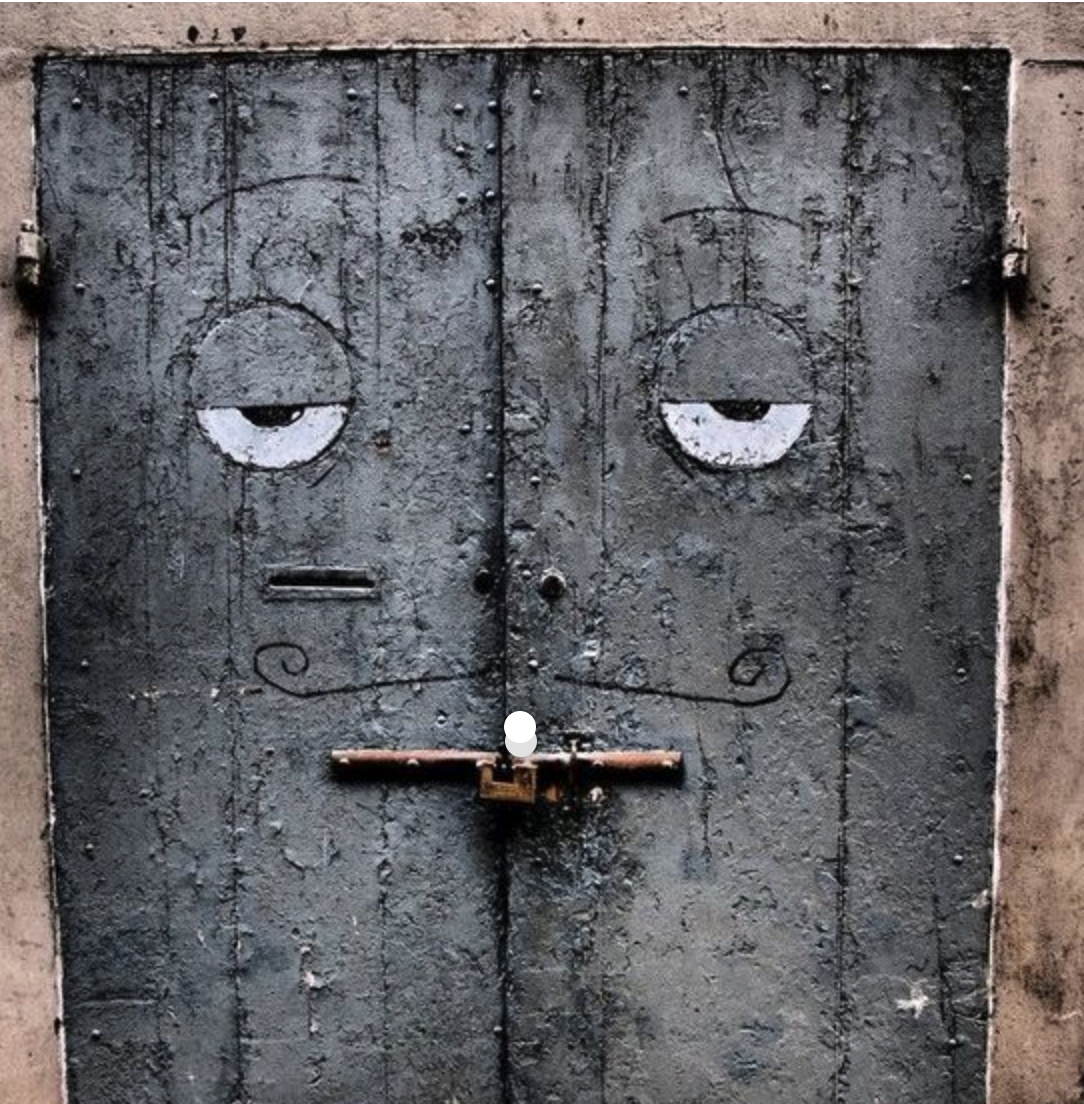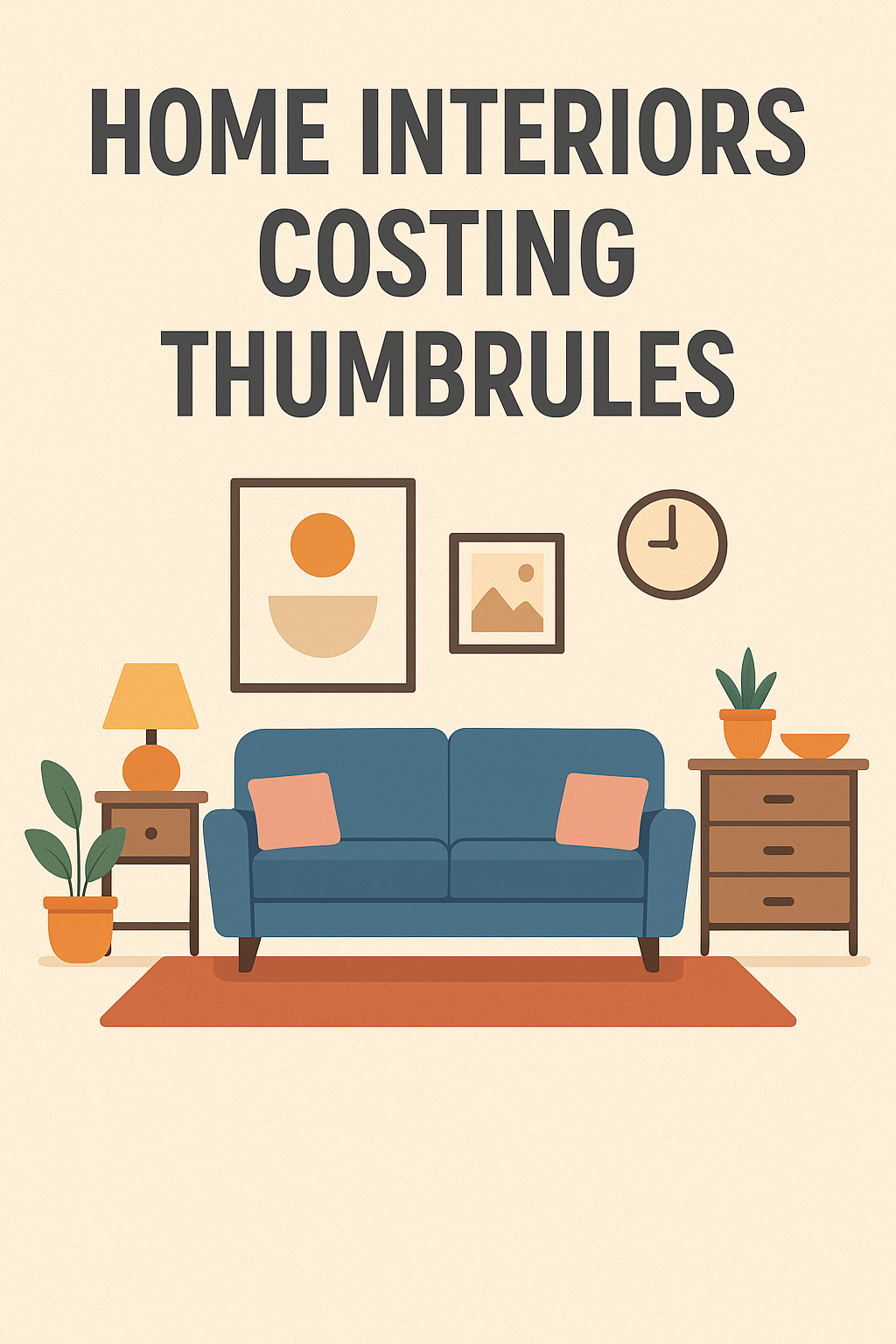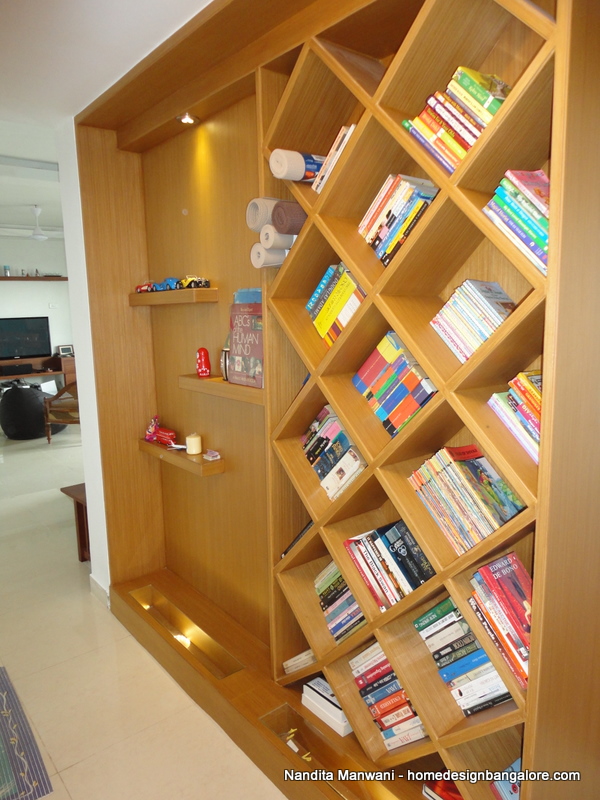For a number of years now I have been speaking on the topic of the Culture of Space and the deep influence of design on the life of people who occupy the space. It is a fundamental concept of in Interior Design but one that is amongst the least understood and implemented.
Today Deccan Herald featured our article on this very subject – here is a pic. You may read the unedited version of the same below
Cheers
Nandita

The Culture of Space – The Deep Influence of Design on the Culture & Behavior it Incubates.
The Interaction of life and design is something like a vicious circle, a yin & yang with each counter-influencing the other. While the concept of designing cities and spaces based on lifestyle and culture is a fairly well detailed and a researched concept, the counter effect of Design on the lifestyle and the culture that it creates is a topic that is still in its nascence, even within the interior design fraternity.
Each space, the way it is designed, built, maintained, kept dirty or kept clean exudes a certain culture, that culture drives the behavior and life of the people occupying the space – be it a family, office staff, visitors or shoppers. This is perhaps the same reason why pan gets spit in spitted corners and not in clean corners and why garbage is dumped on un-maintained land just because the land is anyhow unclean and a bit more garbage will not change its nature.
Let’s take this a step further – if the manner in which a space is built and maintained can determine the way people behave in it then can we not consciously Design spaces to cultivate a certain culture and behavior? The answer to that is an absolute YES. The closest examples to this are found in design of Palaces and Places of Worship – if you’ve been to the Bahai temple in Delhi or inside the main hall of the Bull temple in Basavanagdi – the play of colours, the sound of the bells, the pillars, the landscape and the smell of the incense exudes an aura that drives a feeling of positivity and awe. Even the architects of famous Palaces across India have used specific design techniques such as the slant of natural lighting, the access of light through specific types of Jaali work and the use of either rich or mellow colours on the inside to drive a specific feeling in each of the different halls of the palace. The easiest example of this is the Diwan E Aam at the Red Fort – done in mellow natural stone to drive a feeling simplicity and comfort in this hall where the common man had an audience with the King. Compare this to the Diwan E Khas where the King met with state guests – done up in rich marble and ornate carvings or for that matter the Durbar Hall of the Mysore Palace in rich bright shades of Blue and Gold to exude grandiose, power and control.
We don’t need to build temples and palaces to get these design techniques to work for us. Our homes, as well as places of business too can use this power of design by aligning its 5 core elements namely – the layout, furniture, lighting, colours/ paint and furnishing to curate a specific aura that the space exudes and, in return, a culture that it drives. As an example, a feeling of stability and power gets delivered when browns are combined with earthy elements like gold, leather and stone, you combine the same brown with white and the space will feel open and airy. A reading nook in the kids’ room may drive the children to grow a reading habit, a climbing wall on the other hand may grow the spirit of adventure
Add to this is the fact that we experience spaces through our four senses – sight, smell, sound and touch. This is why you will find well-designed spaces – especially commercial retail outlets, malls & showrooms, incorporate engagement of all the four senses in a well-planned fashion to create a certain mood with the visitors. The closest example of this is the distinct perfume of large retail outlets that encourages the behavior of spending, even casinos in Vegas have been known to use fragrances that encourage spending and gambling. In fact, scent marketing is now a formal term in the business with solid research behind it. In homes, a central place like the Pooja Room for the incense stick or a diffuser can change the entire feel of the home and create that “smell of Home” which people associate with throughout their life. The type of music that you play in your store and the way the display is arranged add the 2nd and 3rd sense of sound and touch that creates its unique aura and culture.
The job of an Interior Designer is not just to create good looking spaces but really to curate a culture of space that makes you feel a certain way when you reside in it and in time helps you become what you aspire to be. This is a dimension of design whose appreciation and understanding is still nascent both with consumers and within the design fraternity itself. I do hope that this appreciation grows and more home makers and businesses gain from this core give back of good design
Signing off
Nandita
Nandita Manwani is a leading Interior Designer in Bangalore and is the founder of The Studio by Nandita Manwani
